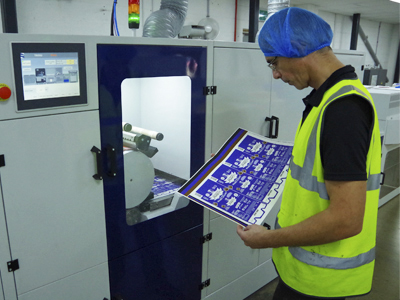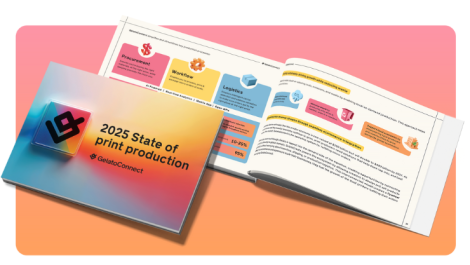Nick Seville, digital production manager at Qualvis, inspects prints from the Xerox-Tresu printing and coating line
In response to demand for shorter packaging run-lengths, Qualvis Print & Packaging has moved into digital production and invested in two printing and integrated folding carton coating lines from Xerox and Tresu.
Installed at folding carton converter Qualvis Print & Packaging of Leicester in early 2017, each production line features a sheet-fed Xerox iGen digital press, integrated with a Tresu Pinta flexo coater, providing a single-pass package printing solution with speeds of up to 2500 sheets per hour, overseen by only one operator.
One line features the iGen5, with CMYK plus a station for blue, green or orange, allowing the matching of up to 93 per cent of the Pantone colours; the other features the iGen4, with four process stations but the same levels of speed, automation and quality, with maximum resolutions of 2400 x 2400dpi. The iGen 4 line includes a CP Bourg dual feeder, making dual-sided coating possible. After coating on each line’s Tresu Pinta, the automatically stacked sheets, of sizes up to 364 x 660mm, are wheeled to a Kama DC76 cutting and creasing system nearby.
The new lines provide personalised packaging, multiple brand and language variations, as well as market testing samples. Running one shift per day, which can vary from a single run to as many as ten jobs, digital printing now represents about 10% of Qualvis’s turnover.
‘In the last decade we have seen average packaging print runs reduce by over half to about 8,000 sheets,’ explained Jason Short, Qualvis’s managing director. ‘The makeready times in litho mean we could not fulfil the growing need for shorter runs and maintain the machine uptime critical for success.
‘The two Xerox iGen presses combined with the Tresu Pinta coaters give us the combination of sharp quality, productivity and reliability to compete in these short-run markets,’ he continued. ‘With two lines, we have the back-up to ensure the most demanding delivery times, common for foods, are met on time.’





